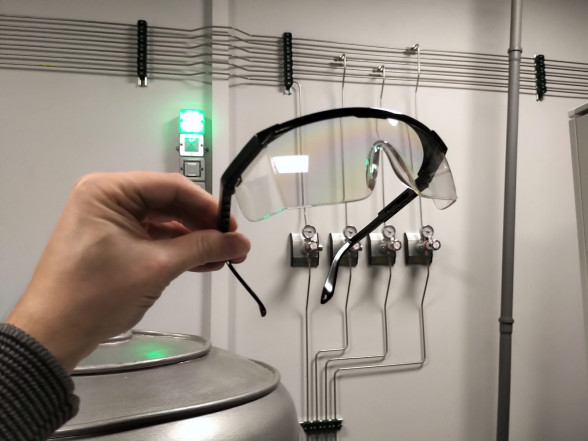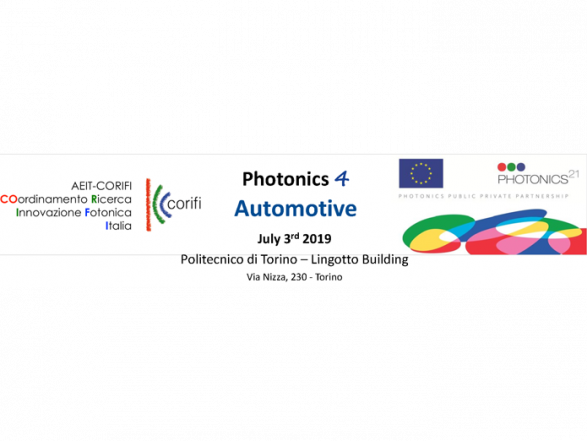In its more than 40 years’ experience as a research institution, the ISSP UL has witnessed some troublesome times, but nothing as global as now. Thanks to the opportunities provided by the CAMART² project, now the ISSP UL is better equipped with the necessary tools and infrastructure to participate in the global efforts to fight the SARS-CoV-2 virus.
The ISSP UL has been actively participating in writing new project applications and widen its research areas in the fields where its scope of research has been proved useful, like in the National Research Program projects of “Mitigation of Covid-19 effects”. The institute is a participant in two of the total of 10 projects. One of them is "Integration of safe technologies for protection against Covid-19 in healthcare and high risk areas", which is implemented together with Riga Technical University, Rezekne Academy of Technology, University of Latvia, Institute of Electronics and Computer Science, Latvian Institute of Organic Synthesis, Latvian Biomedical Research and Study center, Riga Stradinš University and Latvian State Institute of Wood Chemistry. The total project funding is 497,580 euros.
The SARS-CoV-2 virus pandemic and its aftermath are once again stimulating science to investigate possible antidotes. Today, there are several antimicrobials based on the basic principles and mechanisms of different types of action. Chemical industry products, which are widely available and widespread, are mainly used for environmental disinfection and sterilization. But despite their effectiveness and practical application, they also have significant disadvantages. They are often toxic to the user and the process of their use requires additional protective measures, they are constantly consumed, which necessitates continuous large-scale production and this in turn often poses risks of environmental pollution. As a result, large amounts of resources are consumed inefficiently. By researching the application and modernization of antimicrobial coatings and developing new chemical compositions, as well as adapting them to production and using the most efficient methodology and generally reducing the production costs of coatings, it is possible to reduce the need for chemical biocides. Antimicrobial coatings applied to various contact surfaces retain their effectiveness for a long time and act directly on the RNA or DNA structures of microorganisms by neutralizing them or mechanically damaging their membranes, as well as reducing the ability of bacteria to adhere to the surface and form biofilms.
The study involves multidisciplinary groups of scientists whose areas of expertise are the research of antibacterial catalytic material synthesis (RTU Research Laboratory of Functional Materials and Technologies), deposition (ISSP UL), as well as organic chemistry (OSI, UL). Within the framework of the project ISSP UL is investigating the impact of various coatings of metal oxides on viruses and bacteria, as well as the possibilities of improving the chemical and mechanical resistance of these coatings. Coatings are applied on various surfaces - on PET film, glass and textiles. The thickness of the coatings ranges from 10 to 300 nanometers. Copper and metal oxide based coatings have the potential to provide an antimicrobial effect on surfaces for a wide range of biomedical applications. Experiments with antibacterial activity performed with various microorganisms clearly show the effectiveness of thin films against bacterial growth. An increase in antimicrobial activity is observed by combining the action of copper and tungsten oxide on bacteria.
Magnetron sputtering technology is used to obtain coatings. Magnetron sputtering has been chosen as the application method because it can be scaled to substrates in large areas along with high application rates, which is very important for large-scale production. Variation of process parameters provides an opportunity to obtain coatings with different physio-chemical properties, in different proportions of substances. The visible light transmission of the manufactured coatings makes it possible to use them in protective screens, safety glasses and possibly also in other contact surfaces.
The Latvian Television made news story called “The transparent antimicrobial coating for screens” about the above mentioned National Research Program implementation at the ISSP UL, which was broadcasted on the Morning News Show (Rīta Panorāma) on November 13. The video is in Latvian.
In order to limit the Covid-19 disease caused by the SARS-CoV-2 virus and reduce its consequences in Latvia, on April 30, 2020 the government of Latvia approved the proposal of the Ministry of Education and Science to allocate five million euros from state budget program "Funds for Unforeseen Events” to National Research Program “Mitigation of Covid-19 effects”.
The Ministry of Education and Science and the Ministry of Health of Latvia developed the National Research Program “Mitigation of Covid-19 effects” in cooperation with the strategic management board, with the participation of representatives from the Ministry of Defence, Ministry of Economics, Ministry of Welfare as well as the Ministry of Environmental Protection and Regional Development of Latvia and State Chancellery, Latvian Academy of Sciences, Association of Latvian Young Scientists, Employers’ Confederation of Latvia and European Bioinformatics Institute (EBI).



